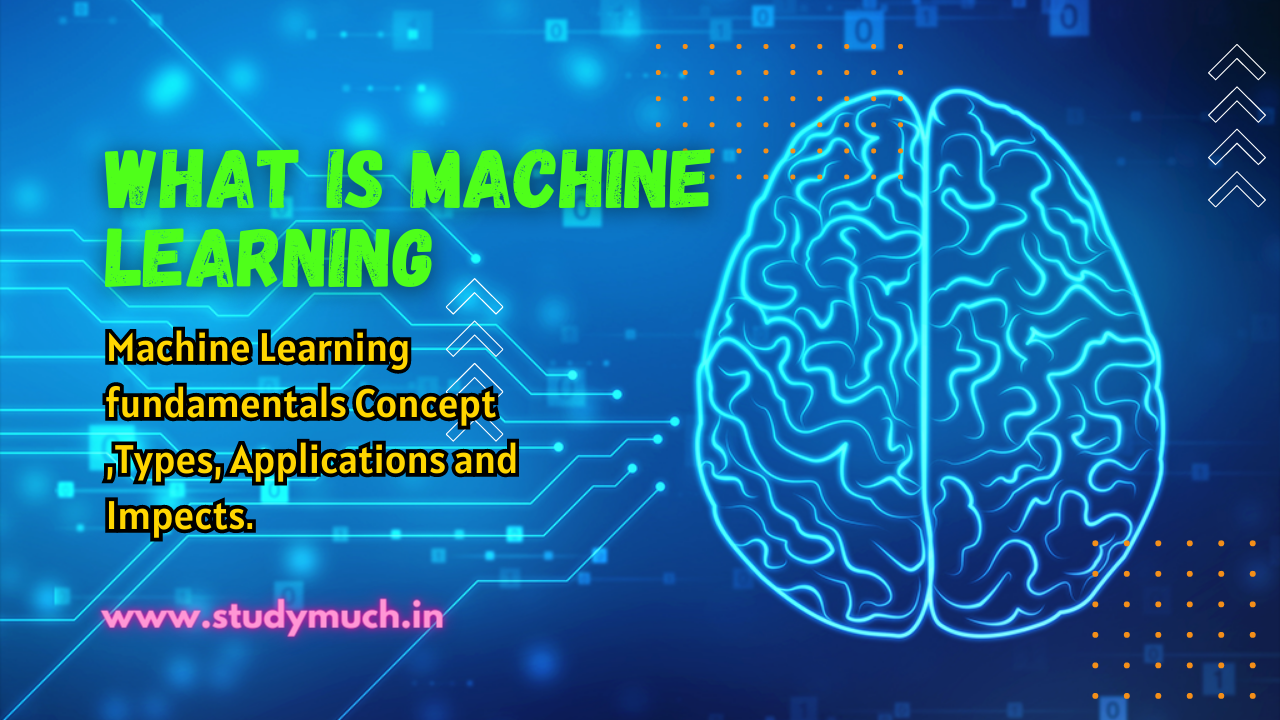What is Machine Learning

What is Machine Learning: A Comprehensive Introduction
In the age of information, the buzzwords “Machine Learning” and “Artificial Intelligence” have become commonplace in discussions about technology, innovation, and the future. But what exactly is Machine Learning, and how does it work? In this blog post, we will take a comprehensive journey into the world of Machine Learning, exploring its fundamental concepts, types, applications, and the impact it has on our lives.
Understanding Machine Learning
Machine Learning (ML) is a subset of Artificial Intelligence (AI) that enables computer systems to learn and improve from experience without being explicitly programmed. The central idea is to develop algorithms and models that can identify patterns, learn from data, and make predictions or decisions based on that knowledge.
Unlike traditional programming, where a programmer writes explicit instructions for a computer to follow, Machine Learning allows the computer to learn and adapt based on examples or data. It can be likened to the way humans learn from experience and gradually improve their decision-making abilities.

The Three Types of Machine Learning
Machine Learning can be broadly categorized into three types, each with its own unique approach:
1. Supervised Learning
In supervised learning, the algorithm is provided with a labeled dataset, meaning the input data is accompanied by the correct output labels. The goal is for the model to learn a mapping between the input features and their corresponding labels. It aims to make accurate predictions on new, unseen data.
Common applications of supervised learning include image classification (labeling images as “cat” or “dog”), spam detection (classifying emails as “spam” or “not spam”), and sentiment analysis (determining the sentiment of a text as “positive,” “negative,” or “neutral“).
2. Unsupervised Learning
In unsupervised learning, the algorithm is given an unlabeled dataset and is tasked with finding patterns and structures within the data. Unlike supervised learning, there are no specific target labels to guide the learning process.
Clustering, where data points are grouped based on similarity, is a popular application of unsupervised learning. It is often used for customer segmentation, anomaly detection, and data compression.
3. Reinforcement Learning
Reinforcement learning is a different paradigm where an agent learns by interacting with an environment to achieve specific goals. The agent receives feedback in the form of rewards or penalties based on its actions, allowing it to learn the best actions to take in various scenarios.
Reinforcement learning is widely used in areas like robotics, gaming, and autonomous vehicles, where agents need to make decisions in dynamic and changing environments.
The Machine Learning Process
The process of creating and deploying a Machine Learning model involves several essential steps:
- Data Collection: The first step is to gather relevant data that will be used to train and test the model. High-quality and diverse data is crucial for successful Machine Learning outcomes.
- Data Preprocessing: Raw data often requires cleaning, transformation, and normalization before feeding it to the ML algorithm. Preprocessing ensures the data is in a suitable format for learning.
- Model Selection: Choosing the right ML algorithm or model depends on the problem type, data, and desired outcome. Different algorithms are more suitable for specific tasks.
- Model Training: During the training phase, the model learns from the labeled data to make accurate predictions. The model’s performance is continually evaluated and refined to achieve the best results.
- Model Evaluation: After training, the model’s performance is tested on a separate set of data (testing data) to assess how well it generalizes to unseen examples.
- Model Deployment: Once the model has proven its effectiveness, it can be deployed to make predictions on new, real-world data.
Impact and Applications of Machine Learning
Machine Learning has revolutionized various industries and is becoming an integral part of our daily lives:
- Healthcare: ML is used for disease diagnosis, drug discovery, personalized treatment plans, and predicting patient outcomes.
- Finance: In finance, ML is employed for fraud detection, risk assessment, and algorithmic trading.
- Recommendation Systems: ML powers recommendation engines that suggest products, movies, or music based on user preferences.
- Natural Language Processing (NLP): ML is used in NLP to enable language translation, sentiment analysis, chatbots, and voice recognition systems.
- Autonomous Systems: ML plays a crucial role in the development of self-driving cars, drones, and other autonomous systems.
Challenges and Future of Machine Learning
While Machine Learning has shown tremendous potential, it also faces some challenges:
- Data Privacy: As ML relies heavily on data, ensuring data privacy and security is critical to protect sensitive information.
- Bias and Fairness: ML models can be biased, leading to unfair outcomes. Efforts are being made to address bias and promote fairness in ML.
- Interpretability: Some ML models, such as deep neural networks, are complex and not easily interpretable, raising concerns about transparency.
The future of Machine Learning looks promising. Advancements in deep learning, reinforcement learning, and natural language processing are pushing the boundaries of what ML can achieve. As AI continues to evolve, integrating ML into various industries will become even more commonplace, improving efficiency, accuracy, and decision-making processes.
Conclusion
Machine Learning is an exciting and transformative field of study, enabling computers to learn, adapt, and perform tasks that were once the domain of human intelligence. By understanding its principles, types, and applications, we can appreciate its significance in shaping the future of technology and its potential impact on our daily lives. As Machine Learning continues to evolve, it will undoubtedly usher in a new era of innovation, making the impossible possible.
Learn More;


0 Comments